In their match against Hertha BSC Berlin, Bayern Munich lost for the first time in the Bundesliga season 2018/2019. However, the defeat was a consequence of earlier signs. In the following we will discuss the weaknesses Bayern shows under Kovac. Furthermore, we are going to analyse how Berlin’s approach lead to success.
Team News
Both sides started with their allegedly strongest line-ups.
Hertha Berlin deployed their 4-2-3-1 formation as usual with the in-form Duda on the playmaker position playing behind Ibisevic and next to the wingers Kalou as well as new signing Dilrosun from Manchester City. Left-back Mittelstädt replaced Plattenhardt and goalkeeper Kraft the injured Jarstein. The four central players Rekik, Stark and Maier and Skjelbred in midfield remained in the starting line-up. Last but not least, right-back Lazaro played a key role in the match es explained later.
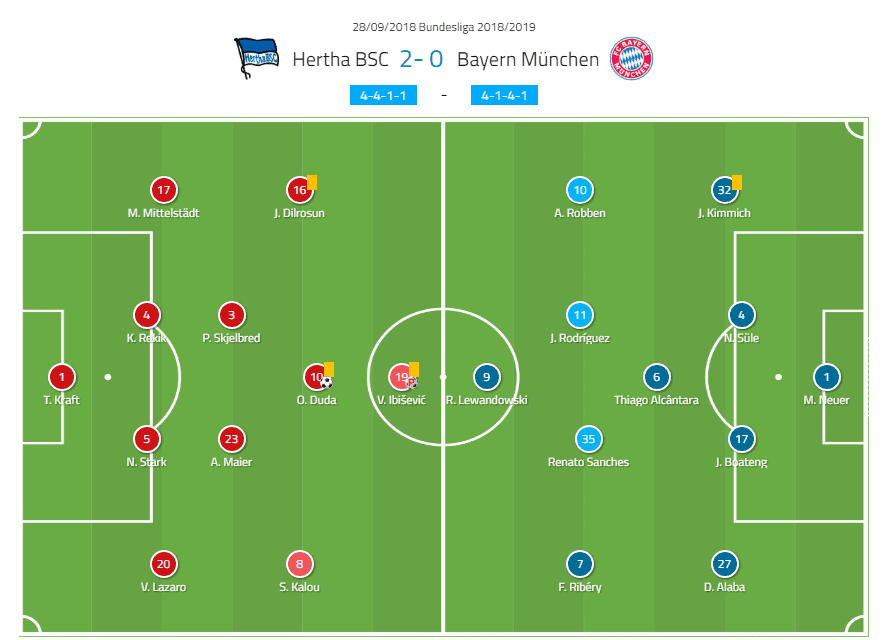
Kovac undertook some changes compared to their draw against Augsburg during the week. With Lewandowski, Ribery, Boateng, Thiago, Alaba and James back in the first eleven one can speak of a first choice line-up. Goretzka and long-term casualty Coman missed due to injuries. The Croatian manager chose a 4-1-4-1 formation with a lot of occupation of wide areas which will be explained in detail below.
Hertha’s full-back tactics
Hertha attacked with very offensive full-backs and thereby caused troubles for the back-four of Bayern. Especially Lazaro showed a huge amount of offensive contribution proven by the Positions Network of 11tegen11 below. The reaction of FCB towards this strategy turned out to be an issue. Ribery and Robben supported Kimmich and Alaba in defence. That left Lewandowski alone up front and the offensive contribution of the dangerous wingers was decreased. Due to the defensive contribution of Ribery and Robben, Hertha pinned the wingers in areas far away from their own goal.
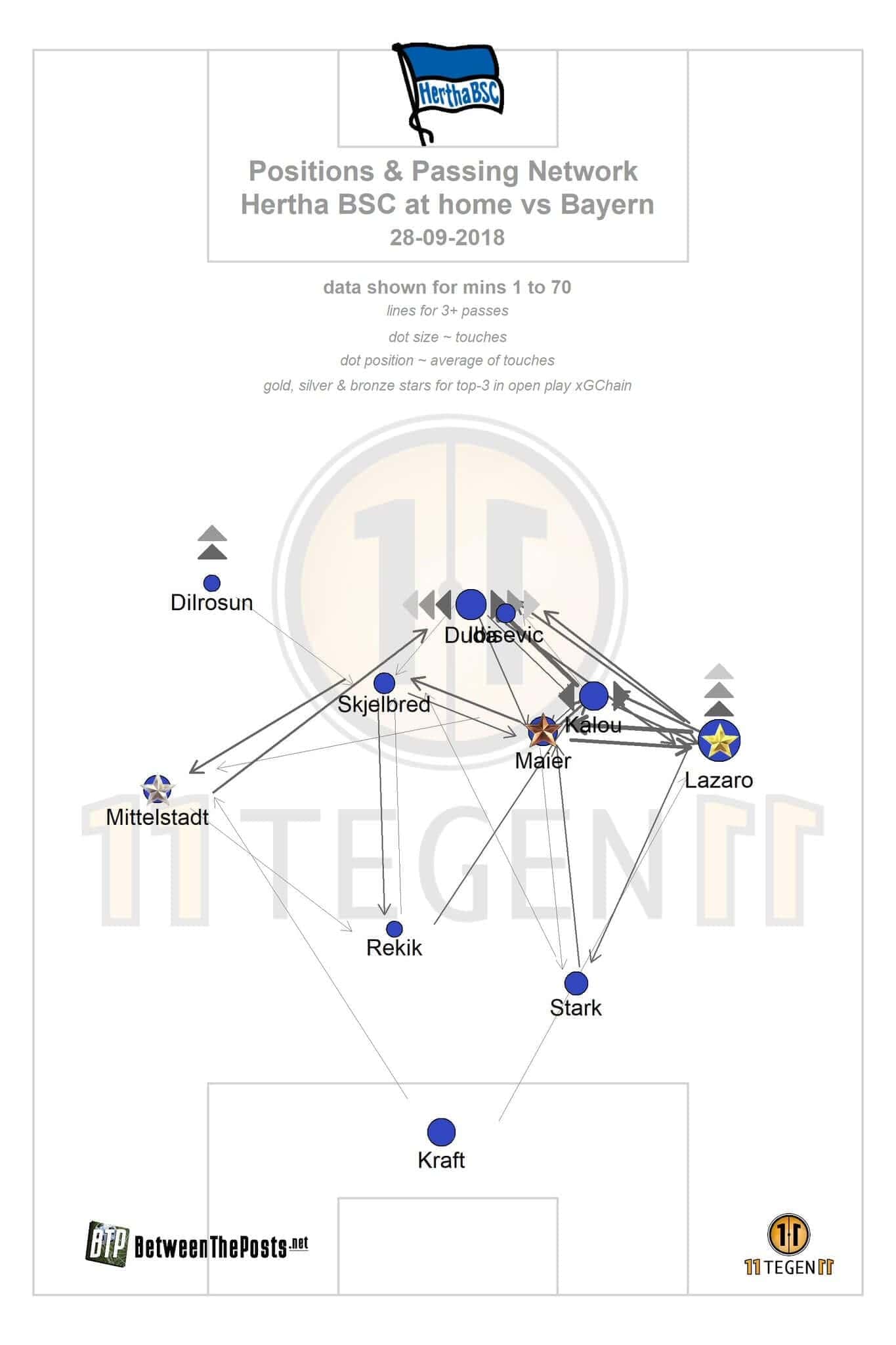
In one situation when Ribery missed to follow Lazaro, Hertha scored their second goal of the match. Because Thiago tried to support Alaba and Boateng on the wing, goal scorer Duda was unmarked in the centre.
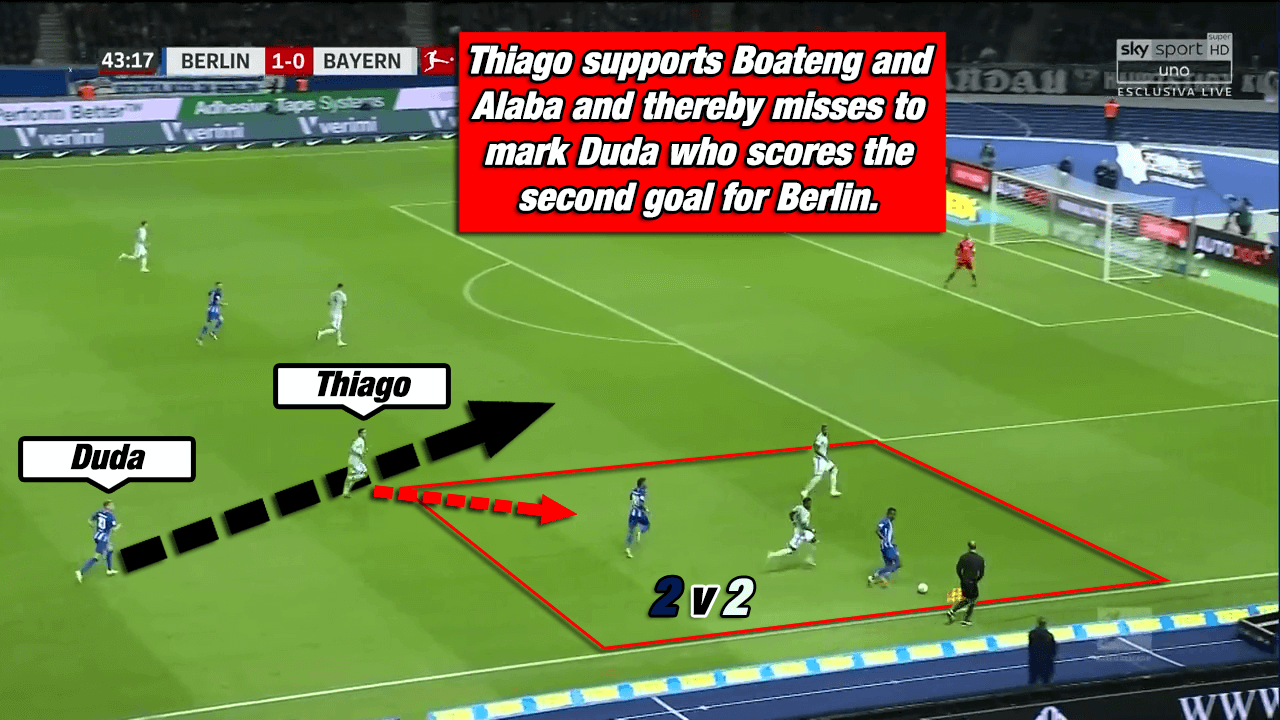
Full-back Lazaro also played a key role in build-up. Whenever Bayern shut down all short passing options, goalkeeper Kraft played long balls to Lazaro who was superior in aerial duels against Ribery.
Berlin’s defensive strategy
The side of Pal Dardai pressed FCB high up the pitch, which has been proven to be a promising approach against Bayern. Therefore, central offensive midfielder Duda pushed forwards into the attack to press together with striker Ibisevic. This created a 4-4-2 formation in Berlin’s defensive phase.
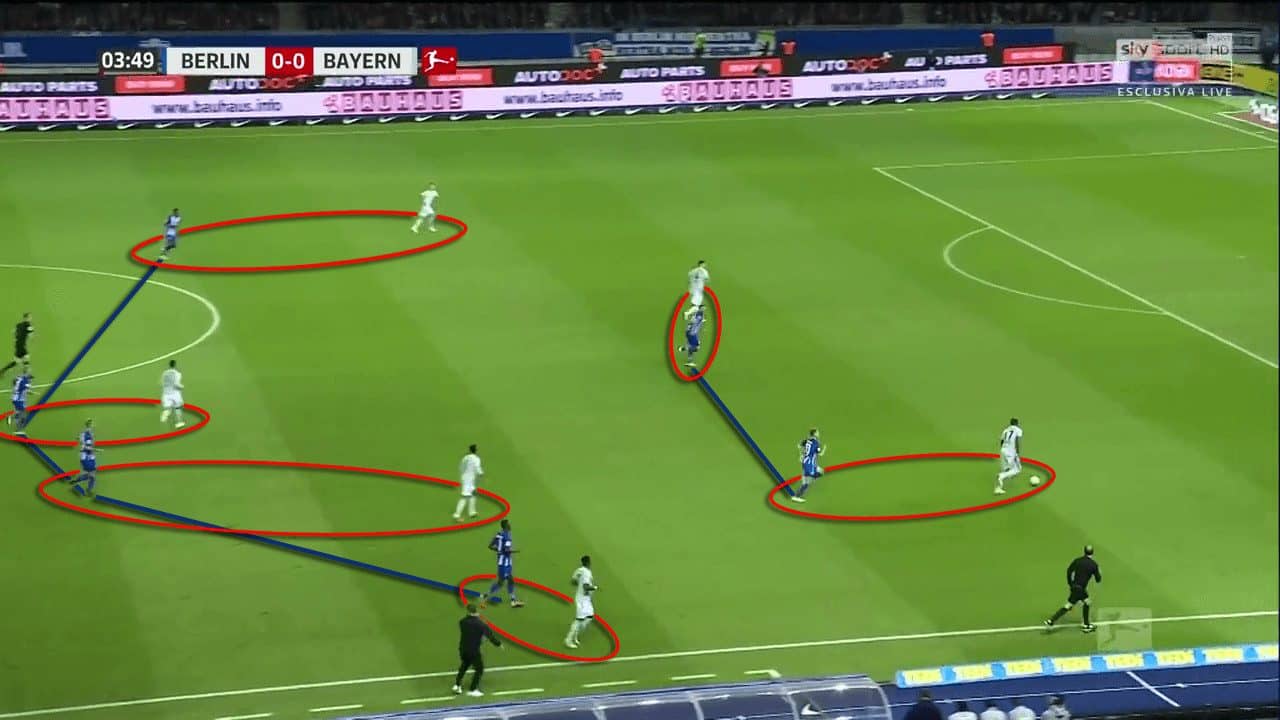
From the beginning on, Hertha attempted to take the control away from their opponent. With a mix of zonal marking and man marking, Dardai’s side shut down all short passing options in the opposition half. This way Die Alte Dame often forced Neuer to play long balls in the build-up. Central-midfielders Skjelbred and Maier were, then, able to win a lot of first or second balls as the midfield of Bayern was spread apart. If Bayern progressed up the pitch, Berlin changed to zonal marking only.
Furthermore, Berlin stopped Ribery and Robben from breaking through on the flanks with the help of the central midfielders. Arne Maier and Skjelbred closed the gap between centre-back and full-back and occasionally even tripled the stars of Munich. This allowed centre-backs Stark and Rekik to mark Lewandowski together in the penalty-box.
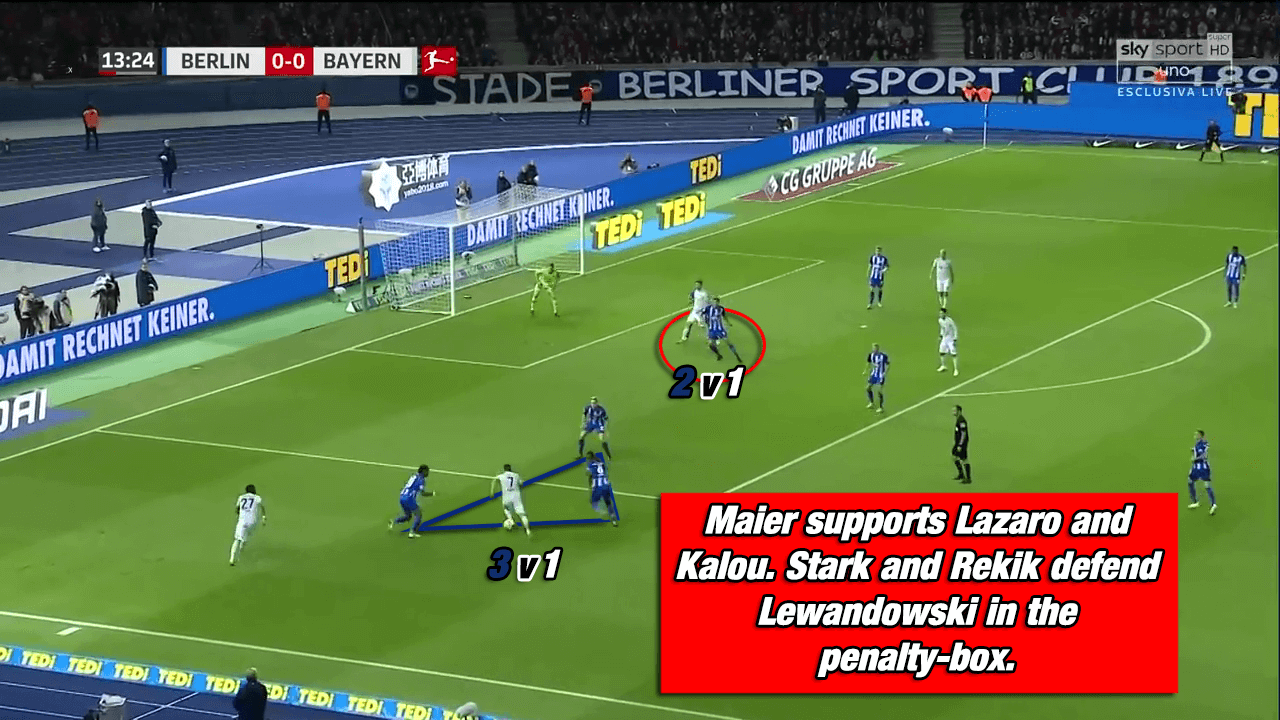
Bayern’s mistakes
Apart from any tactical background, Bayern committed an unusual high number of mistakes in passing even without being pressed. In addition to that, the leading goal of Hertha was a penalty resulting from an unnecessary foul of Boateng.
Moreover, Bayern often struggled to exploit space in the centre. Hertha focused on closing down the wings which created gaps in central parts of the pitch. However, in most of the situations there was no real passing option in the centre. Lewandowski sometimes dropped to receive the ball but as a typical lay-off-player he then struggled to find a teammate to lay off to. Both, James and especially Sanches missed to occupy these spaces to connect build-up to the attacking phase.
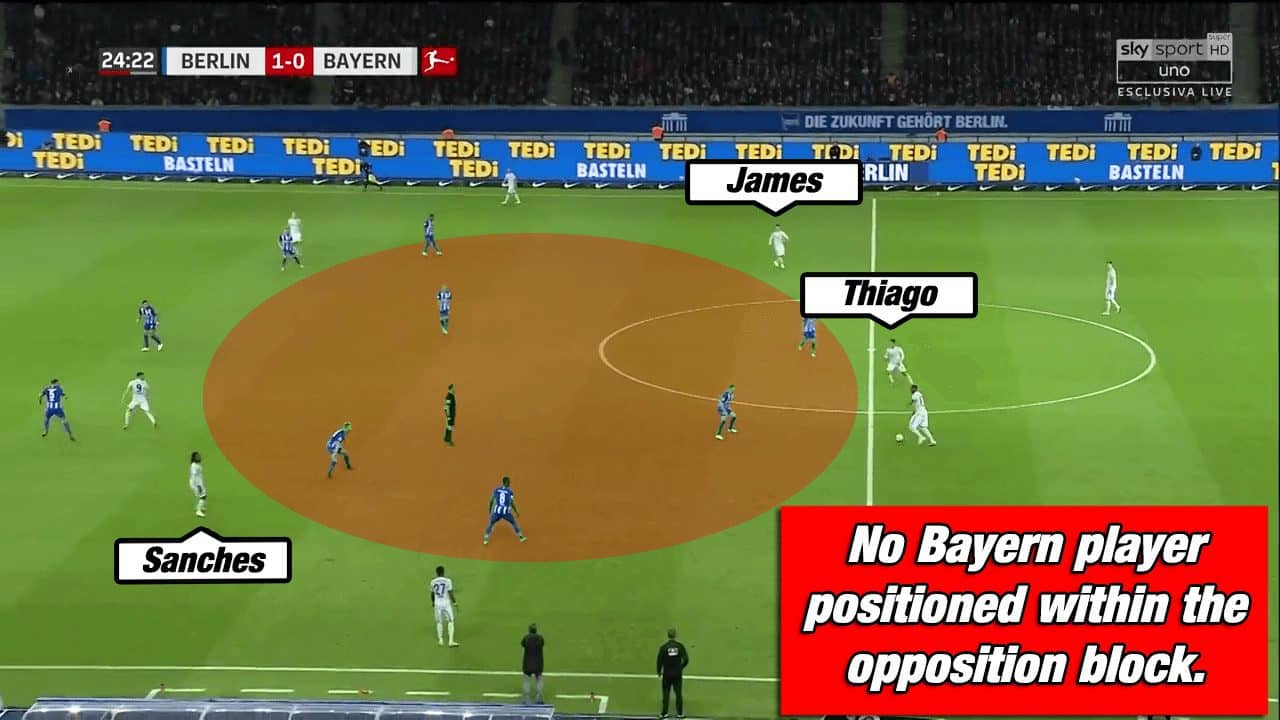
FCB showed some different strategies in possession. Sometimes Thiago dropped between both centre-backs forming a back-three in build-up. In other situations, Sanches or James dropped into a full-back position allowing Kimmich and Alaba to push higher. No matter what, it seemed like there was a lack of communication since the movement of the three midfielders was not synchronised and they all moved into low or high areas at the same time which unbalanced the formation.
Possible solution for Bayern’s issues
Creating passing lanes into the centre would open up spaces on the wings. This would make Bayern less predictable and thereby less dependable due to their individual quality. The graphic below shows an example of how the spacing of Bayern could look like. It shows the same situation as in the picture above. But James and Sanches are in a more central area. Moreover, Boateng and Süle adjust their position to Thiago who completely drops into a back-three. This would allow Bayern to make use of their individual superiority.
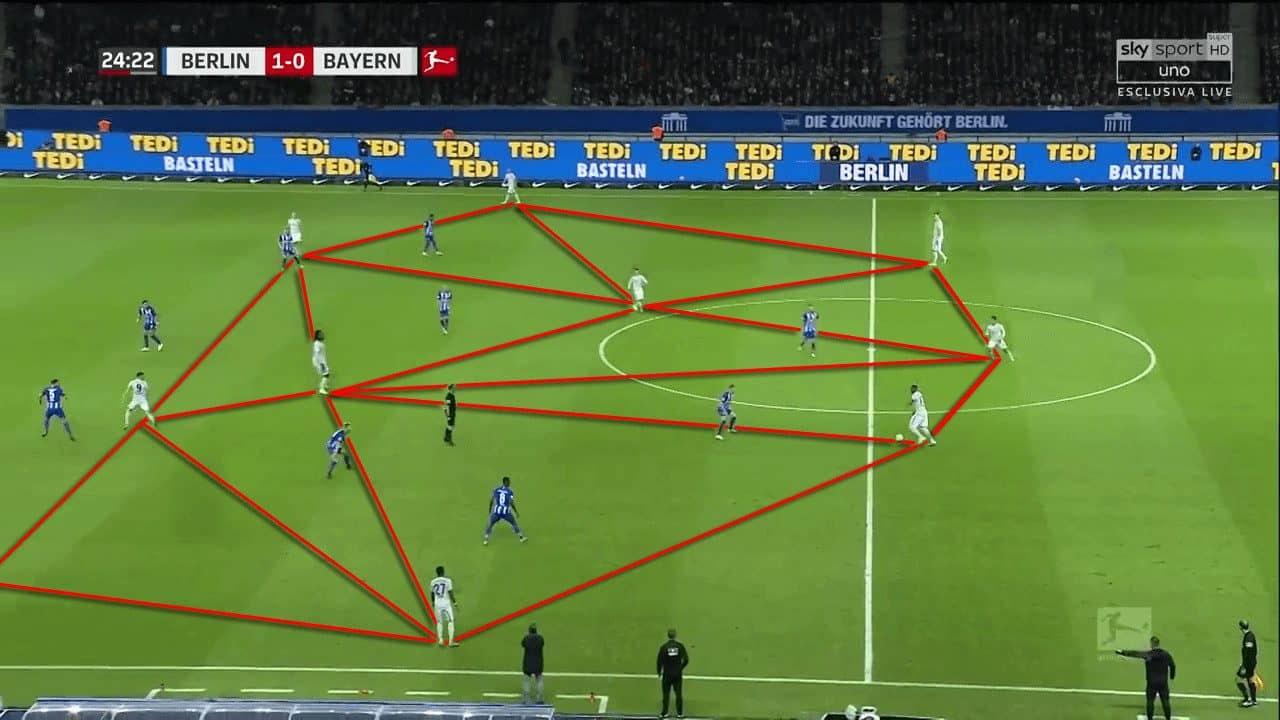
In the second half Munich still struggled to play through the centre. However, Bayern made the breakthrough on the wings more often than in the first half. The circulation of the ball in their typical U-shape enabled them to create overloads in wide areas of the pitch. But the predictability of their attacks still decreased the success rate. Hertha defenders knew that Bayern would attempt the breakthrough either on the left or on the right flank.
Instead of substituting a central midfielder who can use the spaces between the lines to make the attacking phase more variable, Kovac brought further players for his wing-attack philosophy. With substitutes Müller and Wagner, Kovac tried to present Hertha with the problem of defending a second player with heading qualities in the penalty-box after crosses. Taking out Robben even increased the issue as Bayern only attacked from the left side from then on. All in all FCB was way too predictable and thereby facilitated Berlin’s defensive work.
Conclusion
It was no coincidence that Berlin won the match. Although Bayern should have deserved a at least one goal or even a draw, recognising the expected goals chart below, the side of Niko Kovac showed same struggles as they already did in recent matches.
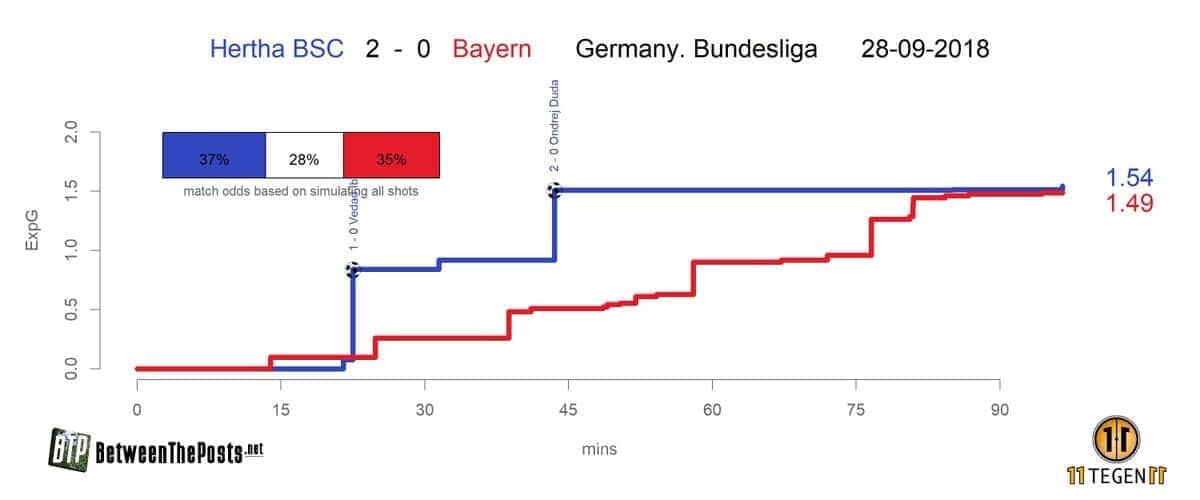
Kovac showed satisfaction with the performance of his team in the second half. But being honest, even with a better conversion of chances, Bayern would have only got one point which is not enough looking at the clubs’ ambitions. It seems to be harsh, speaking about a crisis after just one defeat, but the Croatian manager has a lot of issues to fix in a short term. For the moment, Bayern has to cede the lead in the Bundesliga to Borussia Dortmund.
On the other hand, Berlin exploited Munich’s weaknesses very well. Berlin played with courage and therefore deserved to win the match. Hertha showed the Bundesliga how to beat the all-time champion.




Comments